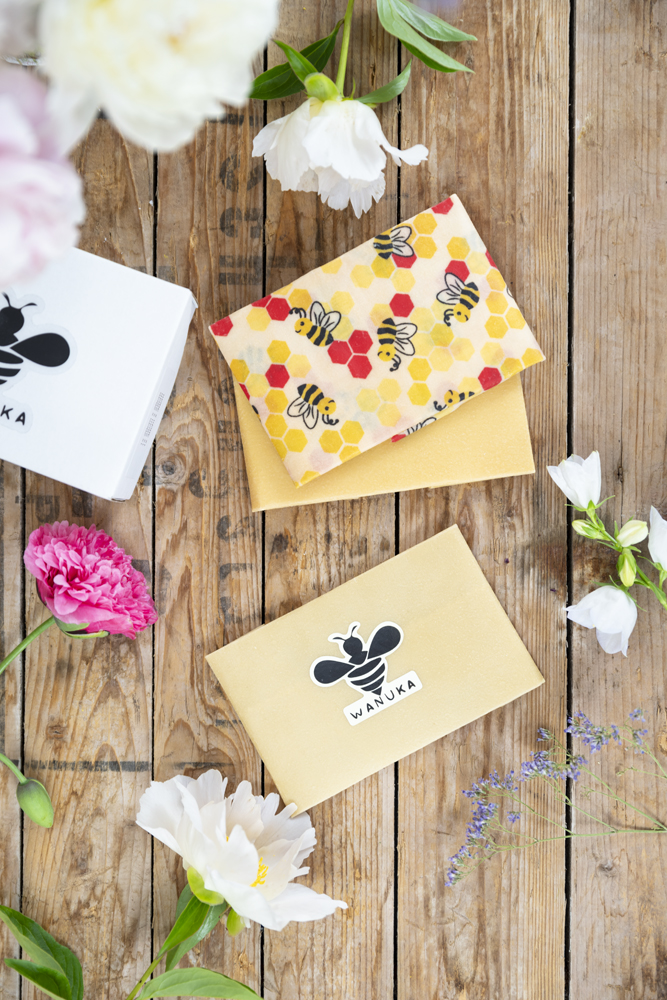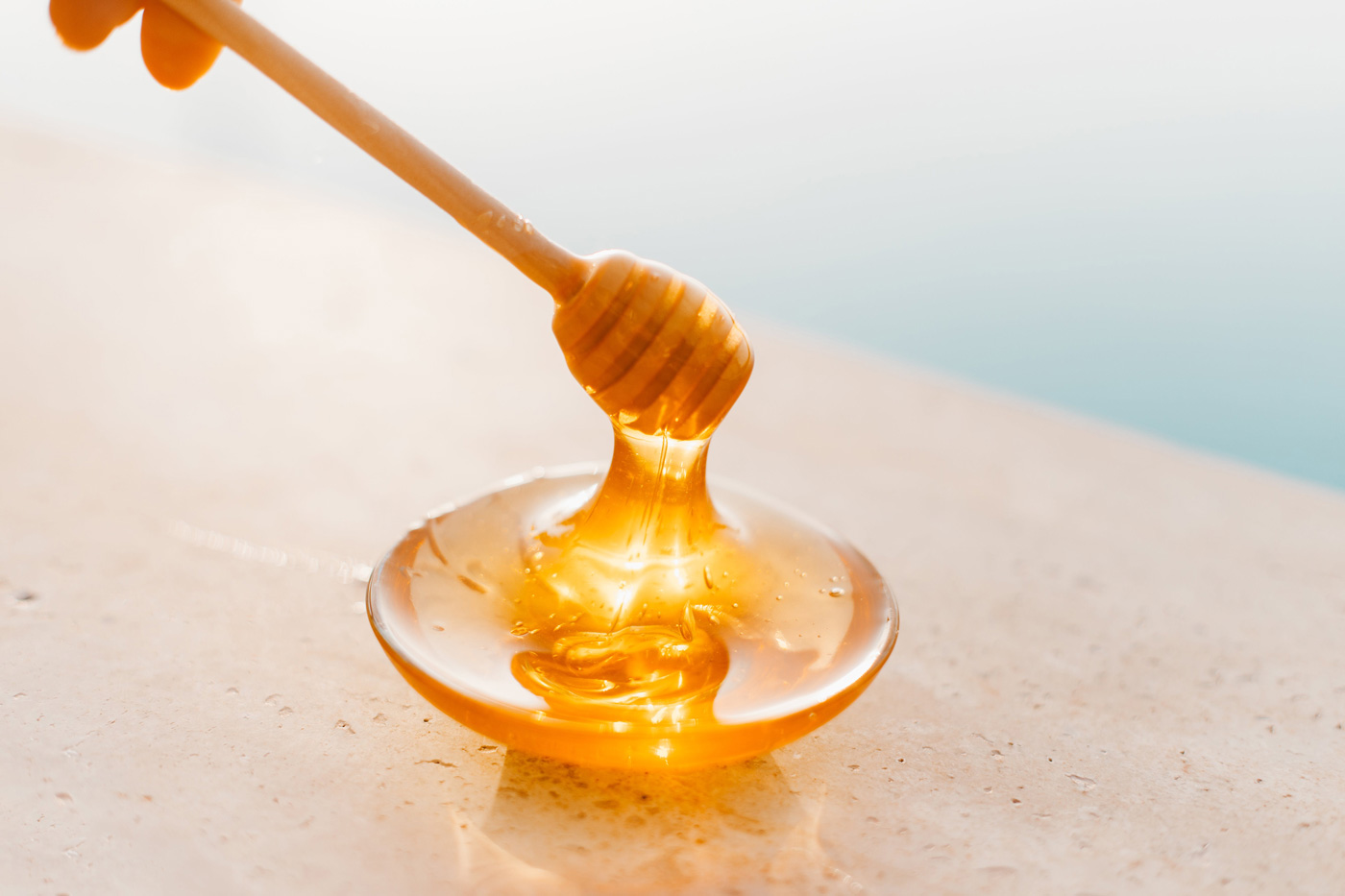Photo by Adobestock free of charge: By ddukang
Honey, nature’s sweet gold, not only has an unmistakable taste, but is also often praised for its health benefits. However, a frequently asked question is: Is honey alkaline or acidic? Let’s take a closer look at the question “Is honey alkaline?”.
The pH value of honey
The pH value is a scale that measures the acidity or alkalinity of a substance. A pH value of 7 is neutral, values below are acidic, and values above are alkaline. Honey, as a complex mixture of sugar, water, enzymes and other compounds, has a slightly acidic pH, normally between 3.2 and 4.5.
The pH of honey varies slightly depending on various factors, including the source of the flowers, the breed of bee and the processing methods. In general, however, the pH of honey is between 3.2 and 4.5. This slight acidity makes honey an acidic food on the pH scale.

The acid in honey
The acidity in honey comes mainly from organic acids such as gluconic acid, citric acid and malic acid. These acids not only give honey its characteristic taste, but also have antimicrobial properties that can help inhibit the growth of bacteria and microorganisms in honey.
It is important to note that the pH value of honey is only one aspect of its overall chemical composition. Despite its acidic nature, honey is metabolized alkaline in the body. This means that when honey is digested, it releases alkaline substances and can slightly increase the pH of the blood. However, this effect is comparatively small and does not normally play a crucial role in the overall pH balance of the body.
Honey remains popular not only for its flavor and sweetness, but also for its many health benefits that go beyond its pH value. From antioxidants to anti-inflammatory properties, honey has a firm place in naturopathy and the culinary world.
The acid in honey
The acidity in honey comes mainly from various organic acids that are added or modified by bees during the production process. Here are some of the most important organic acids found in honey:
Gluconic acid in honey
This acid is produced when bees convert nectar into honey. Gluconic acid contributes to the acidity of honey and also has antimicrobial properties that promote the shelf life of honey.
Citric acid in honey
Naturally occurring citric acid contributes to the sour taste of honey. It also plays a role in regulating the pH value and helps to maintain the taste and quality.
Malic acid in honey
Malic acid is another organic acid found in honey. It gives honey a slightly fruity flavor and contributes to its overall acidity.
Lactic acid in honey
Small amounts of lactic acid can also be found in honey. This acid is produced by the activity of lactic acid bacteria.
The combination of these organic acids not only gives honey its characteristic taste, but also contributes to its preservative properties. The acidic environment inhibits the growth of bacteria and microorganisms in the honey, which contributes to its natural shelf life.
It is important to note that the acidity of honey can vary depending on variety, origin and processing. Different floral sources and geographical regions can produce different chemical profiles in honey, resulting in a variety of flavors and acidity levels.
Honey and the body
Although honey has an acidic pH value, it is metabolized alkaline in the body. This means that when honey is digested, it releases alkaline substances and can slightly increase the pH value of the blood.
The influence of honey on the acid-base balance is comparatively small. The health benefits of honey result more from its unique composition, which includes antioxidants, enzymes, vitamins and minerals. Honey has anti-inflammatory, antioxidant and antimicrobial properties that can support health.
The body’s acid-base balance is highly individual and is influenced by various factors, including diet, metabolic processes and health status. While honey tends to have a slightly alkaline effect, the individual reaction can vary.
It is important to emphasize that a balanced diet rich in a variety of foods and a healthy lifestyle are critical to maintaining the body’s acid-alkaline balance. If you have specific health concerns or nutritional questions, it is advisable to consult with a healthcare provider or nutritionist.
Health benefits of honey
Regardless of its pH value, honey offers numerous health benefits. It contains antioxidants, has anti-inflammatory properties and can help relieve sore throats and coughs. The various enzymes in honey aid digestion and support the immune system.
Conclusion on the question “Is honey alkaline?”
In terms of pH, honey is slightly acidic, but the effects on the body are more complex. Honey is not only a delicious sweet, but also a natural source of nutrients and health benefits. When it comes to nutrition, it’s important to enjoy honey as part of a balanced and varied diet. Keep in mind, however, that those with specific health conditions or allergies should always consult with a doctor or dietitian before consuming large amounts of honey or other foods.



